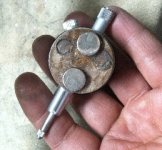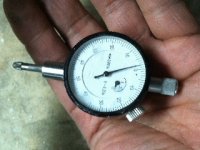I have to say, I am surprised how accurate the deluxe lathe is. I had a friend come over today, ( al Phelps) a cuebuilder from Maryland
and he showed me how to dial it in. Well , IT"S DEAD NUTS . and I'm so proud of it. It's been holding me back. Now I'm enthusiastic, and going gung ho making cues. Thankyou Alan Phelps. cuemaker extraordinaire. AND thankyou Chris Hightower, EVERYONE should buy one. They are versatile, and great for almost every job in making cues.
Chris, keep up the great work.
Bill
no longer selling anything in my shop because of this.
and he showed me how to dial it in. Well , IT"S DEAD NUTS . and I'm so proud of it. It's been holding me back. Now I'm enthusiastic, and going gung ho making cues. Thankyou Alan Phelps. cuemaker extraordinaire. AND thankyou Chris Hightower, EVERYONE should buy one. They are versatile, and great for almost every job in making cues.
Chris, keep up the great work.
Bill
no longer selling anything in my shop because of this.
Last edited:

